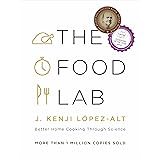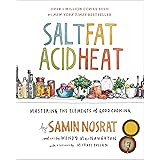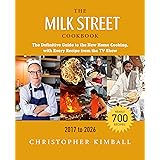The pursuit of wholesome and delicious meal options often leads us to explore innovative recipes that cater to both taste and health. For individuals prioritizing a balanced diet, particularly those focusing on weight management or simply seeking energizing alternatives, understanding the nutritional value of ingredients becomes paramount. The accompanying video expertly demonstrates the preparation of a delightful and low-oil healthy moong dal breakfast, showcasing how simple ingredients can be transformed into a powerhouse of nutrition without compromising on flavor.
This article delves deeper into the advantages of incorporating sprouted moong dal into your diet and expands upon the culinary techniques presented in the video, ensuring that every reader can confidently recreate this satisfying dish. A focus is placed on the scientific benefits of each component, providing a comprehensive understanding of why this recipe stands out as an excellent choice for any meal. Furthermore, practical tips for ingredient selection and preparation will be offered, enhancing the overall cooking experience.
The Nutritional Powerhouse: Sprouted Moong Dal for a Healthy Breakfast
Moong dal, specifically the split green gram with husks, is widely recognized as a superfood in traditional diets due to its exceptional nutritional profile. This legume is particularly abundant in plant-based protein, dietary fiber, and a variety of essential vitamins and minerals, including folate, magnesium, iron, and potassium. Consequently, its regular consumption significantly contributes to overall well-being and supports various bodily functions, making it an ideal base for a healthy moong dal breakfast.
The process of sprouting moong dal further amplifies these nutritional benefits. Sprouting initiates enzymatic activity within the legume, which breaks down complex starches into simpler sugars, making the dal more digestible. Additionally, the bioavailability of certain nutrients, such as iron and zinc, is often increased, and the content of vitamins, particularly B vitamins and Vitamin C, can rise substantially. This enhanced nutritional value, combined with its high fiber content, helps in prolonged satiety, a crucial factor for those on a weight loss journey.
Unlocking Benefits: Why Sprouted Moong Dal is a Superior Choice
Incorporating sprouted moong dal into your diet presents numerous health advantages that extend beyond basic nutrition. Firstly, the increased fiber content in sprouted legumes plays a vital role in digestive health, promoting regularity and preventing constipation. This contributes to a healthier gut microbiome, which has far-reaching effects on immunity and mood regulation.
Secondly, for individuals managing blood sugar levels, sprouted moong dal is an excellent choice. Its low glycemic index means that the carbohydrates are released slowly into the bloodstream, preventing rapid spikes in blood glucose. Thirdly, the significant protein content supports muscle repair and growth, which is essential for active individuals and those maintaining a healthy metabolism. Finally, the antioxidants present in moong dal help combat oxidative stress, protecting cells from damage and potentially reducing the risk of chronic diseases. These combined benefits reinforce the suitability of this legume for a truly healthy moong dal breakfast option.
Crafting the Perfect Batter: Ingredients and Preparation Techniques
The foundation of any exceptional dish lies in the meticulous preparation of its core components, and this healthy moong dal breakfast is no exception. As demonstrated in the video, the initial step involves soaking one cup of moong dal, preferably overnight, which softens the legumes and primes them for sprouting. This simple act of soaking is crucial, not only for encouraging sprouts but also for reducing cooking time and enhancing digestibility, thereby maximizing the nutritional yield.
Following the soaking and sprouting process, the dal is blended with a carefully selected array of fresh ingredients. An inch of ginger and two to three green chilies are incorporated to provide a vibrant flavor profile and a subtle warmth. Furthermore, one-fourth cup of semolina (सूजी) is added, which contributes to the desired texture and crispness of the final product. A modest amount of water, approximately two to three tablespoons, is judiciously added during grinding to achieve a coarse, yet cohesive, batter consistency. This controlled addition of water is critical to prevent the batter from becoming too thin, ensuring optimal results during cooking.
Achieving Optimal Consistency and Flavor
Once the initial blending is complete, the batter is transferred to a bowl, where additional ingredients are systematically folded in to enhance both flavor and nutritional value. Half a cup of gram flour (besan) is included, which further enriches the protein content and contributes to the binding properties of the batter. Seasonings such as one-fourth teaspoon of turmeric powder and half a teaspoon of coriander powder are added, providing an earthy depth and vibrant color. Taste is adjusted with half a teaspoon of salt and half a teaspoon of red chili powder, allowing for personal preference.
To elevate the savory profile, one tablespoon of chaat masala is incorporated, introducing a tangy and zesty dimension that perfectly complements the other spices. A crucial addition for digestive comfort is a pinch of asafoetida (hing), which is particularly beneficial when consuming legumes. Finally, a medley of finely chopped fresh vegetables, including red and green bell peppers, one grated carrot, and one medium-sized onion, are folded into the mixture. These vegetables not only boost the vitamin and fiber content but also add a delightful crunch and freshness. The batter’s consistency is then fine-tuned with one to two tablespoons of water, ensuring it is neither too thick nor too thin, a critical factor for achieving a soft and fluffy texture.
The Science of Softness: Leavening Agents for a Fluffy Texture
The secret to achieving a remarkably soft, fluffy, and spongy texture in this healthy moong dal breakfast lies in the intelligent use of leavening agents. Baking soda, or sodium bicarbonate, plays a pivotal role in this process. When one-fourth teaspoon of baking soda is introduced into the batter, it reacts with acidic components to produce carbon dioxide gas. This gas becomes trapped within the batter, forming tiny bubbles that expand during cooking, resulting in a light and airy structure.
To activate the baking soda effectively and ensure maximum leavening power, a few drops of lemon juice are added directly over it. The citric acid in the lemon juice initiates an immediate chemical reaction with the baking soda, generating a burst of carbon dioxide. This rapid reaction is essential, as it creates numerous small air pockets that contribute significantly to the desired fluffy texture. Therefore, it is imperative to mix the batter thoroughly and begin cooking almost immediately after adding the leavening agents, preserving the precious gas within the mixture.
Cooking Techniques for a Low-Oil, Crispy Finish
The cooking method employed for this healthy moong dal breakfast is designed to achieve a perfectly cooked, crispy exterior with a minimal amount of oil, further emphasizing its health benefits. A non-stick pan or a small kadai is typically used, with just one tablespoon of refined oil added to coat the surface. Once the oil is adequately heated, a touch of cumin seeds (jeera) is introduced, which splutters and releases an aromatic fragrance, enhancing the overall flavor profile of the dish.
A spoonful of the prepared batter is then gently placed into the hot pan, with the heat maintained at a low setting. This controlled temperature prevents premature browning and allows the batter to cook evenly from the inside out. The pan is then covered with a lid for approximately two to three minutes, creating a steamy environment that aids in thorough cooking and allows the leavening agents to work their magic, making the snack puff up beautifully. After this initial cooking period, the snack is carefully flipped to cook on the other side, often for an additional two minutes, ensuring both sides achieve a golden-brown, crispy finish. This methodical approach ensures a fully cooked, incredibly soft, and delightfully crispy moong dal snack every time, demonstrating that a healthy moong dal breakfast can be both nutritious and incredibly appealing.











